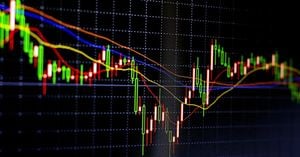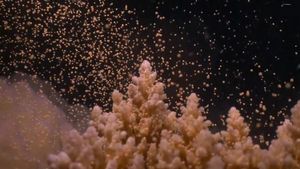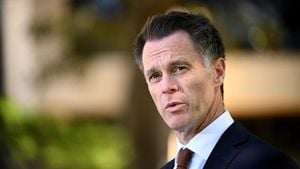With J.D. Vance set to become the next Vice President of the United States, the political stage is already set for another transition affecting Ohio’s political sphere. Following Vance's departure from the Senate seat he has held since 2022, Ohio's Governor Mike DeWine now faces the significant task of appointing his successor. This marks the third Senate vacancy for Ohio in as many years, prompting interest from various ambitious Republicans eager to claim the mantle left behind.
According to Ohio law, when there’s a vacancy, the governor has the authority to appoint someone to fill the vacancy, at least temporarily, until the next special election. Governor DeWine, as a Republican, is likely to appoint another member of the GOP to replace Vance, thereby maintaining party control of the Senate seat.
Once appointed, Vance’s replacement will serve until December 15, 2026. A special election will then take place to fill the remaining term until 2028. This position is particularly significant as it will shape not only Ohio's representation but also the dynamics within the Senate itself.
The political speculation surrounding potential candidates to succeed Vance is already heating up, with prominent figures such as Lt. Governor John Husted, Attorney General Dave Yost, Secretary of State Frank LaRose, and state Senator Matt Dolan being floated as potential choices. Husted has previously held positions as both the state Senate president and his current role, positioning him as a strong contender.
Attorney General Yost, known for his legal battles against various initiatives and regulations, is also seen as someone who could pivot easily from state politics to federal representation. Meanwhile, Secretary of State Frank LaRose, responsible for overseeing elections and other civic responsibilities, adds another layer of intrigue to the list.
Matt Dolan, who ran against Vance and other GOP opponents in the 2022 primaries, might also be considered due to his previous experience and visibility. Each candidate brings distinctive qualities to the table, shaping the future of Ohio’s representation.
Interestingly, some other potential dark horses, such as former Republican Presidential candidate Vivek Ramaswamy and other notable figures from previous elections, are also voicing their interest. Ramaswamy hinted at his willingness to serve if approached, stating, “I’d strongly think about it if asked.”
Despite the obvious inclination to maintain the Republican hold on this Senate seat, the personalities involved, especially between DeWine and Vance, have sparked conversations about what kind of senator might be chosen. While DeWine is seen as somewhat moderate compared to Vance, who often champions more extreme views and grassroots movements, the difference could lead to unexpected dynamics within the Senate.
Adding to the suspense, J.D. Vance himself, who won his Senate seat by 53% against Democrat Tim Ryan, reflects the changing tides of Ohio politics. His rise has not only positioned him for the vice-presidential role, but it has paved the way for yet another chapter to be written on political succession within the state’s Republican hierarchy.
It will be interesting to observe how Governor DeWine navigates these political currents. Choosing the right candidate is not just about filling the seat; it’s about ensuring the selection aligns with broader party strategies, especially heading toward the presidential elections.
While Vance’s achievements are still fresh and Ohio attitudes evolve, his successor will need to answer to the strong political currents both within and beyond the state. Given the electoral politics playing out, 2026 will prove significant, as candidates gear up for what could be fiercely contested races. It raises questions about how this will affect Vance’s eventual policy positions as Vice President as well and how he’ll work with whoever is appointed to his former seat.



